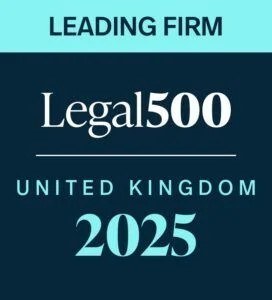A recent discrimination case ruling at the Employment Appeal Tribunal (EAT) has implications for businesses operating in the commercial and property sectors beyond the field of employment. The decision was that the Equality Act 2010 (EqA) not only prevents discrimination by a person against another person, but also prevents discrimination by a person against a company based on an individual within that company’s protected characteristic.
Facts
In the case of EAD Solicitors LLP and others v Abrams EAT 2015, the Claimant was a partner in a Limited Liability Partnership (LLP). As the Claimant approached retirement, for tax reasons, he set up a limited company of which he was the sole director and principal shareholder. The Claimant then resigned from the LLP but continued to provide his services as a consultant via his newly formed limited company which took his place as a member of the LLP.
When the Claimant reached the age of 62, the age at which he would have been required to retire from the LLP under the partnership agreement, the other LLP partners objected to his company continuing to offer the Claimant’s services to the LLP as a consultant. The Claimant brought an age discrimination claim under the EqA naming his limited company as a party to the claim.
The LLP argued the company could not be discriminated against because only an individual can have the protected characteristics named in the EqA. The argument went to the Employment Appeal Tribunal (EAT).
Law
Direct discrimination occurs where, "because of a protected characteristic", a person (A) treats another (B) less favourably than A treats or would treat others" (section 13(1), EqA.
“Person" is not defined in the EqA, but the Interpretation Act 1978 provides that a person includes a body of persons corporate or unincorporate, unless the contrary intention appears. The EqA does not contain any provision to the contrary.
Decision
The EAT rejected the LLP's argument that only individuals can be protected from discrimination.
The EAT referred to the Interpretation Act 1978 statement that a person includes "a body of persons corporate or unincorporate". Therefore "person" in the EqA could include a limited company unless the contrary appeared in the statute and no such contrary provision appears in the EqA.
Finally, the EAT also stated that it has long been accepted a company can discriminate against an individual, accordingly there did not seem to be any reason why the "person" discriminated against cannot be a company.
Comment
This is an important development for discrimination law. As well as HR and employment practitioners, the impact of this case is likely to be relevant to those involved in corporate/commercial and property transactions in relation to the provision of goods, services or facilities, or the disposal of premises. The EAT offered some examples where an organisation might suffer discriminating treatment due to the protected characteristic of another individual, such as a company being shunned commercially because it employs an ethnic workforce, a company losing a contract because of pursuing a Roman Catholic ethic, or because of the openly gay stance of a board member.
This case confirms that a company, LLP, charity, educational establishment, or other non-natural person may sue if it receives detrimental treatment based on the protected characteristics of individuals associated with it (whether they be its members, directors, employees, customers, pupils or otherwise). It therefore opens up the potential for discrimination in areas which may not previously have been considered.










